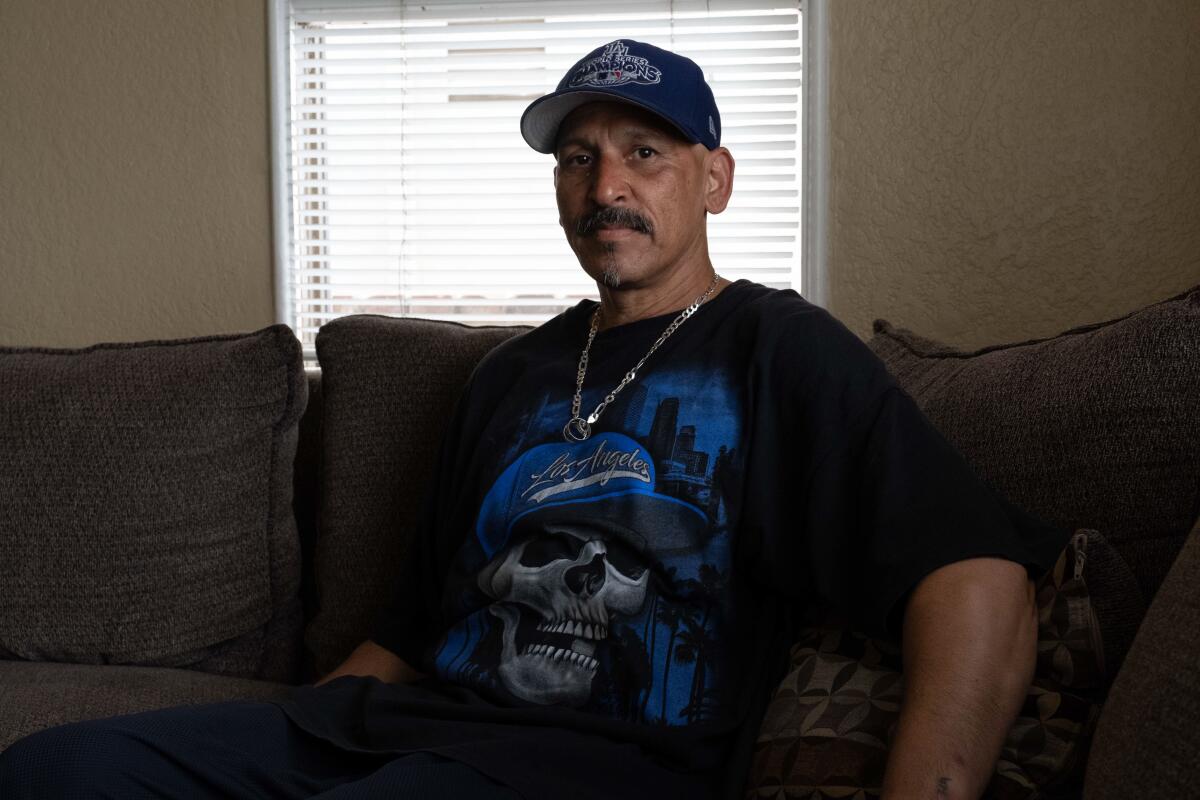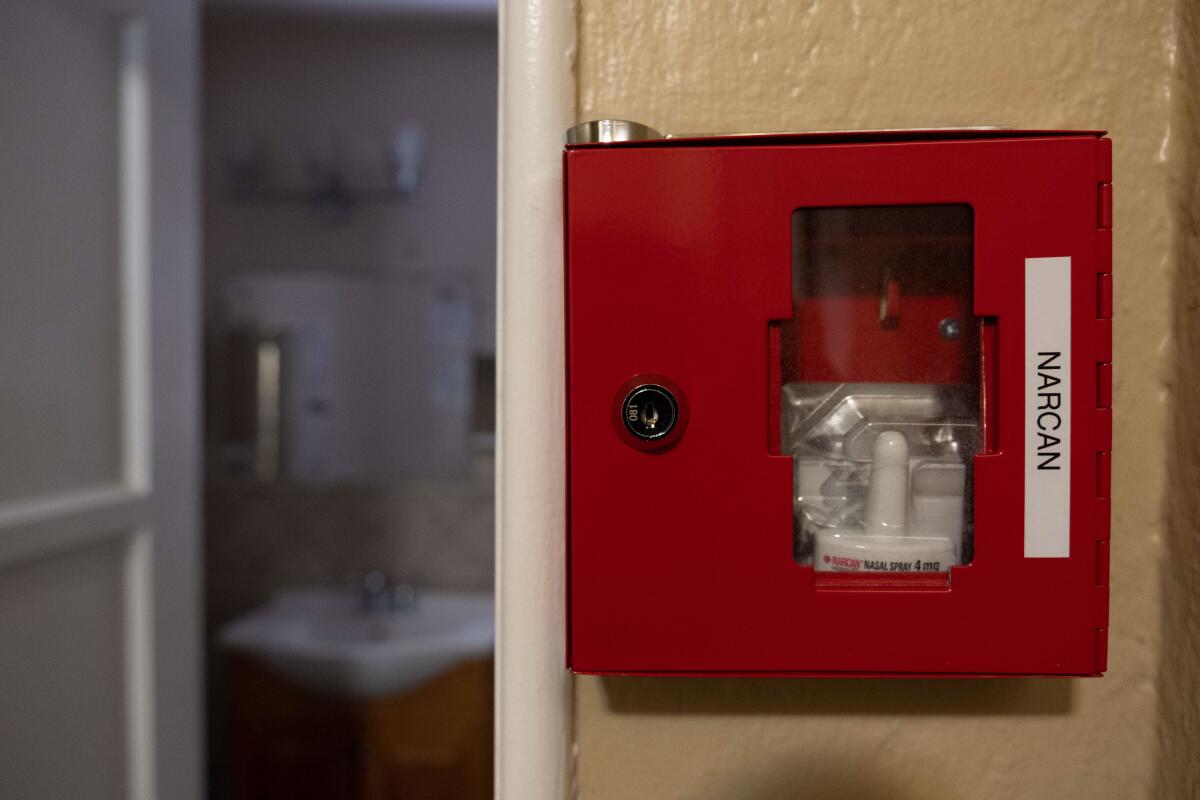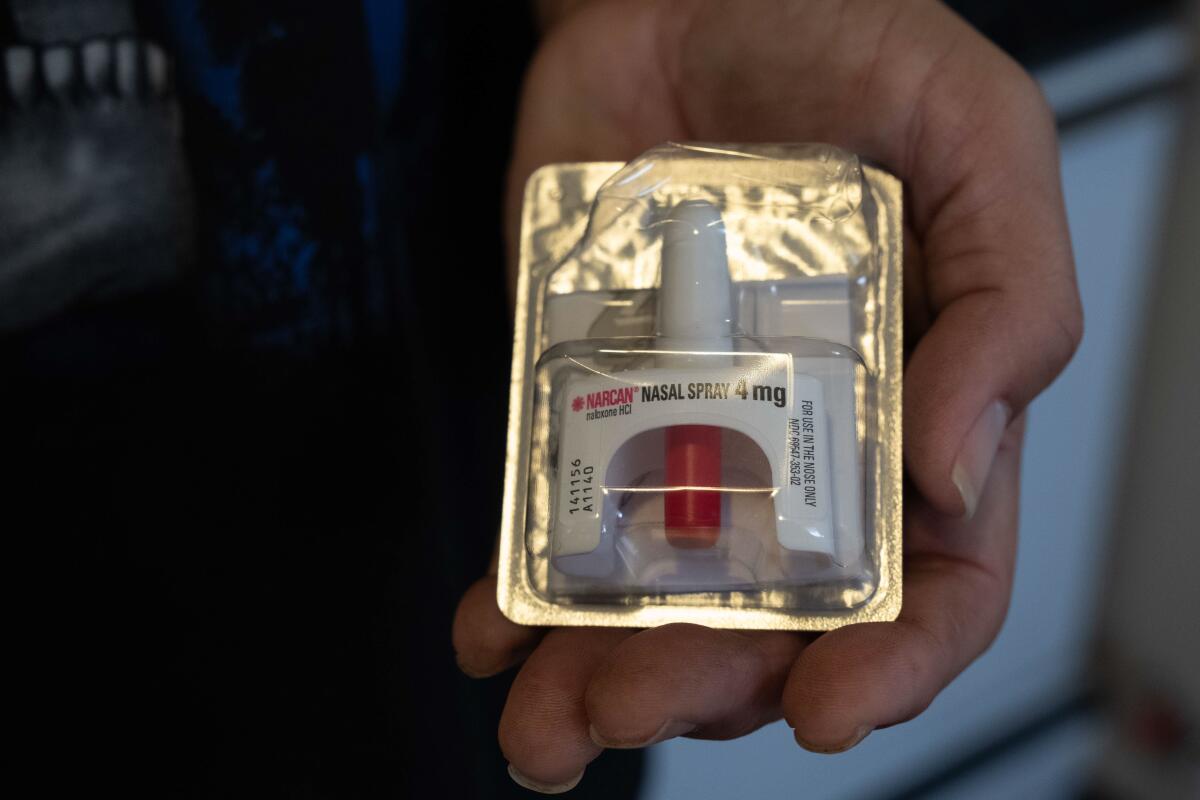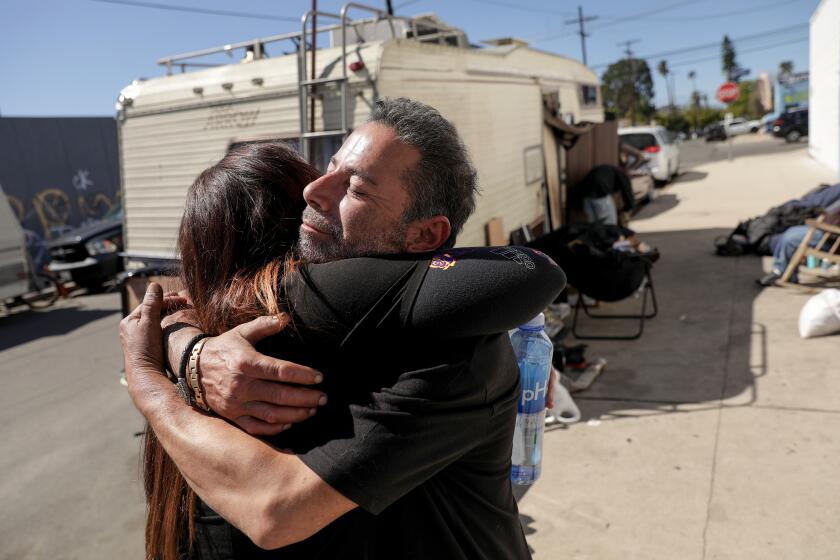Inmates leaving California prisons may be armed with Narcan to reduce overdose risk

- Share via
Michael Vera walked into a bedroom of a residential drug treatment program in Los Angeles in March to find its occupant slumped over on his bed and struggling to breathe, a homemade straw on the floor beside him and tinfoil with what appeared to be drug residue under his body.
The 35-year-old overdose victim had been out of custody for less than 48 hours, in the midst of a frequently fatal danger zone: Individuals newly released from prison are 40 times as likely to die of opioid overdoses than members of the general population, researchers say.
But he was one of the lucky ones, because Vera was among tens of thousands of California inmates to receive training in overdose prevention and resuscitation when he was released from state prison in 2020. He was given two doses of Narcan to take with him, part of California prisons’ attempt to arm every departing inmate with overdose-reversal medication.
Vera and his roommate quickly summoned staff members. Paramedics administered two jolts of Narcan, a brand-name version of the drug naloxone. That stabilized the patient enough to get him to a hospital, where he soon recovered.

More than 80% of inmates released in California between April 2020 and June 2022 departed with antidote kits and the training that goes with them, according to a January study by corrections officials. Acceptance has continued to grow, with 95% of departing inmates accepting Narcan in July 2022, the most recent month with data.
Now corrections officials are trying to determine whether the kits actually save lives by examining overdose rates among formerly incarcerated people. They are still gathering data and have no timeline for results, though their report calls the evaluation effort “a critical priority.” Officials are also looking at whether the program can help address health inequity issues, since overdose death rates are higher in lower-income areas, where parolees often live, and occur disproportionately among racial minorities and people with disabilities.
At the same time, Gov. Gavin Newsom, a Democrat, is looking to cut the cost and boost the supply of opioid antidotes by having the state produce them itself. Currently, federal grants and legal settlements with opioid vendors fund most of the Narcan for departing inmates, but officials said the state did have to buy 1,180 kits for $62.40 each.
“This is an extremely serious problem,” said Lynn Wenger of the nonprofit research institute RTI International. “As people leave jail and prison, their tolerance for opioids is very low and the stress of release is high.”
California is the first state permitted to provide Medicaid to people behind bars, including those with mental illnesses and substance use disorders.
Wenger is the lead author of a 2019 study of a naloxone distribution program at the San Francisco County Jail, where over a four-year period nearly one-third of inmates who were equipped with the drug upon release reported reversing an overdose.
California officials estimate about two-thirds of inmates in the state have a substance abuse problem, fed by smuggled contraband. That statistic tracks with national estimates. A new program to administer anti-craving medications like methadone to incarcerated drug users has brought inmate overdose deaths down substantially over the past several years.
But parolee overdoses remain a huge problem.

The California report, quoting various studies, says people just released from incarceration are 40 times as likely to die of opioid overdoses, though estimates vary. Massachusetts put the death toll at 120 times as high, while a study using Washington state prison data put the risk at 12.7 times as high in the first two weeks. Research in Georgia, Maryland, Michigan, New Mexico, North Carolina, and Chicago’s Cook County all found significant connections.
Globally, overdoses are the top cause of death among people recently released from custody.
“It’s just so scary what’s going on here, and we’re seeing it,” said Mark Malone, director of administration at Fred Brown Recovery Services, a 40-year-old nonprofit in San Pedro. That’s where Vera was getting addiction treatment when he helped save the overdose victim.
Research shows that formerly incarcerated drug users are especially vulnerable because their tolerance for opioids fades while they are behind bars and their social networks and medical care are disrupted, often including any substance abuse treatment they were receiving in prison. And if they use drugs once released, they often do so in solitude, where they are less likely to be found quickly if they overdose.
From April 1, 2020, to March 31, 2021, 1,988 deaths of homeless people were reported, including 715 overdose deaths.
California offers departing inmates a kit containing two doses of Narcan, along with instructions on how to recognize and prevent overdoses, perform CPR and administer the antidote.
Demian Johnson, who spent 35 years in prison for a murder he committed when he was 18 before being paroled in 2018, now helps formerly incarcerated people and others with substance abuse problems at Five Keys Schools and Programs, a San Francisco Bay Area nonprofit. He says two of his friends died soon after they were released from years of incarceration.
“It’s not hard for me to figure out why so many are succumbing to these really, really potent drugs,” said Johnson, noting that what inmates obtain in prison is likely to be much less pure than what they find outside.
One of Johnson’s buddies died alone of fentanyl within a year of leaving prison, he said.
“He had nobody to save him, to bring him back or to issue him some Narcan,” Johnson said.
To prevent overdose deaths, Los Angeles County health officials made a push to distribute 50,000 boxes of Narcan — a nasal spray that can block the effects of an opioid overdose — by this summer.
Wenger says the California program is likely having benefits beyond helping those recently paroled: They can use the Narcan to save others, too.
“They are often released to neighborhoods where they are likely to encounter someone who is experiencing an opioid overdose & will have the tools to reverse an overdose,” she said in an email.
That was the case with Vera, who said he was particularly glad to be able to help someone because he lost a 21-year-old niece and 24-year-old nephew to overdoses around the time he was released.
Vera said the paramedics told him they were just in time.
“If we wouldn’t have found him, they don’t know what his outcome would have been — but it would have been bad,” Vera said. “He has a second chance now.”
This article was produced by KFF Health News, formerly known as Kaiser Health News (KHN), a national newsroom that produces in-depth journalism about health issues and is one of the core operating programs at KFF — the independent source for health policy research, polling, and journalism. KFF Health News is the publisher of California Healthline, an editorially independent service of the California Health Care Foundation.
More to Read
Sign up for Essential California
The most important California stories and recommendations in your inbox every morning.
You may occasionally receive promotional content from the Los Angeles Times.













